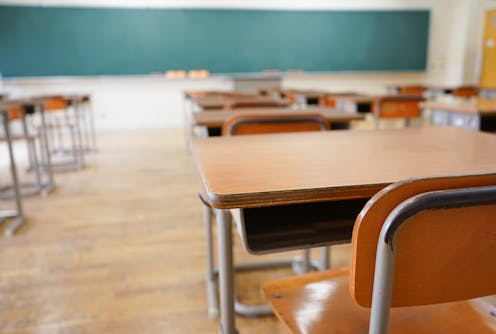
Chronic absenteeism – defined as a student’s missing approximately 18 days of the school year – is on the rise. Compared with the years preceding the COVID-19 pandemic, almost three-quarters of U.S. public schools are now showing significant increases.
SciLine interviewed Dr. Joshua Childs, assistant professor of educational leadership and policy at the University of Texas at Austin, who shared his thoughts on why students become chronically absent, the academic and social losses they incur by missing school, and the strategies available to boost student attendance, including the relationship between absenteeism and school athletics.
Below are some highlights from the discussion. Answers have been edited for brevity and clarity.
What is chronic absenteeism?
Joshua Childs: Chronic absenteeism is missing 10% or more of the school year for any reason. That includes excused absences, like a doctor’s visit or a class field trip, and unexcused absences, such as skipping or being truant from school, and being expelled or suspended from school for behavioral reasons.
How common is chronic absenteeism?
Joshua Childs: On average, around 7.5 million to 8 million students are chronically absent each year. That’s a significant number of students who are missing school for a variety of reasons.
But since the start of the pandemic in March of 2020, the latest national data from the U.S. Department of Education has shown that the number has increased to around 10 million students being identified as chronically absent from school.
How does missing lots of school affect kids?
Joshua Childs: Academically, we know that students who are chronically absent are more likely to drop out and less likely to graduate from high school.
Socially, for students who are chronically absent, they tend to feel less connected to the school and the overall school environment or community, less likely to build connections with the adults or educators within the school building, and also least likely to build connections with their peers.
Developmentally, we know that students who are chronically absent tend to fall behind academically from their peers, and tend to be behind when it comes to math and reading or language arts testing outcomes.
What barriers keep kids out of school?
Joshua Childs: When it comes to physical health, we know that asthma followed by obesity and dental issues are the leading cause for students to miss school. And so not having adequate access to health care to be able to address some of those physical ailments can lead to students’ missing school consistently.
Mental health issues and concerns, particularly or specifically since the pandemic, have increased for students and can lead to their missing school.
Next: the neighborhood context. Are there safe routes, safe transportation, adequate busing options for students to attend school? And attend school not only every day, but on time?
Then there’s the overall school environment. Is it welcoming and engaging for students? Is the school environment physically safe – not only in terms of interactions with peers and the adults, but are there issues with asbestos, or having adequate and reliable desks and textbooks and safe infrastructure within the school building? If not, that can lead to chronic absenteeism rates increasing.
And finally … the family. Do families feel connected and a part of the school environment? Is there constant communication about the importance of attending school and being engaged with the overall school community? Do families understand the value of what the school environment can do for their child, and how consistently showing up can lead to outcomes that are beneficial?
What’s the link between attendance and sports?
Joshua Childs: In many states, coaches have to be full-time employees of the district in which they’re coaching. And so many times coaches are teachers, whether it’s in science, history, math or reading. So they spend significant hours of the school day with students, and also before and after school and weekends over the summer due to the different types of sports that students could be involved in.
One of the most important aspects when it comes to improving student attendance is a connection that students make with adults, particularly those adults engaged with them on a daily basis. And so there’s a role for the coaches to play.
Watch the full interview to hear about how to reduce chronic absenteeism in schools.
SciLine is a free service based at the nonprofit American Association for the Advancement of Science that helps journalists include scientific evidence and experts in their news stories.
Joshua Childs does not work for, consult, own shares in or receive funding from any company or organisation that would benefit from this article, and has disclosed no relevant affiliations beyond their academic appointment.
This article was originally published on The Conversation. Read the original article.







